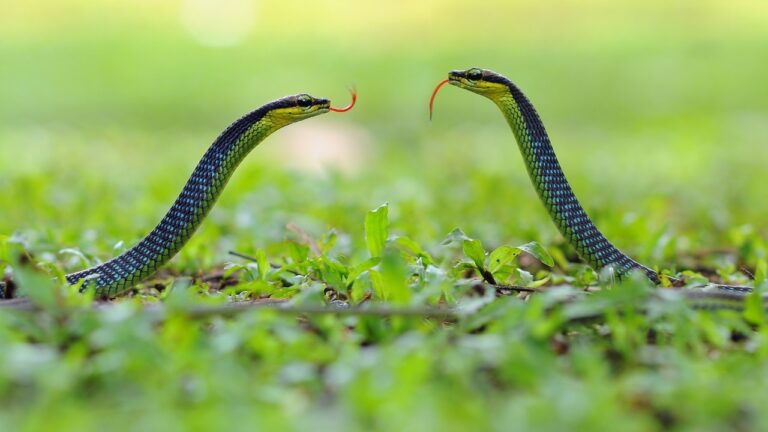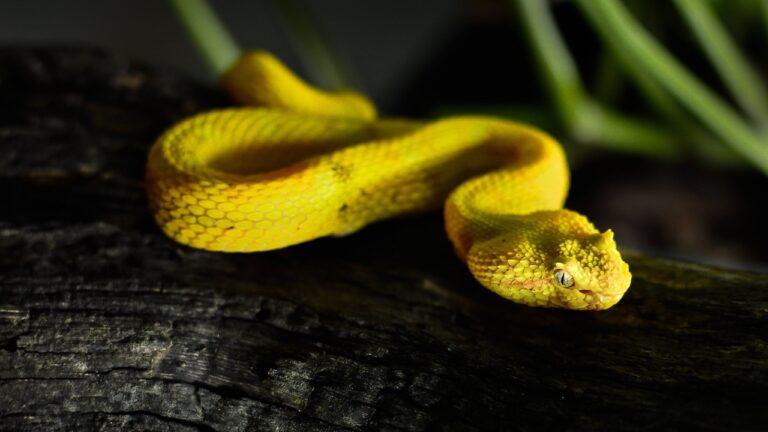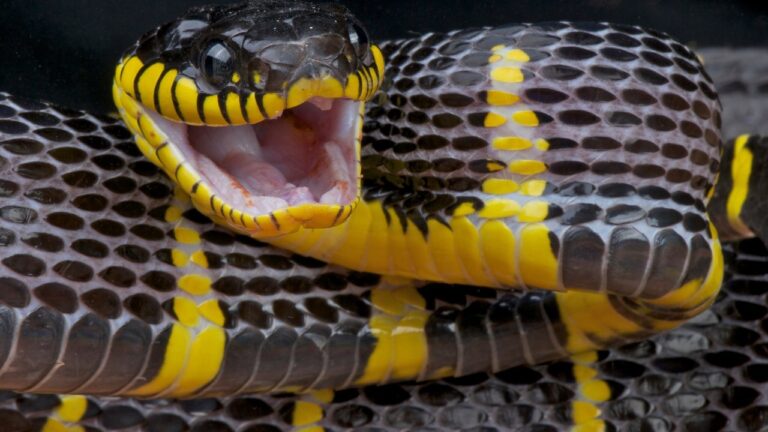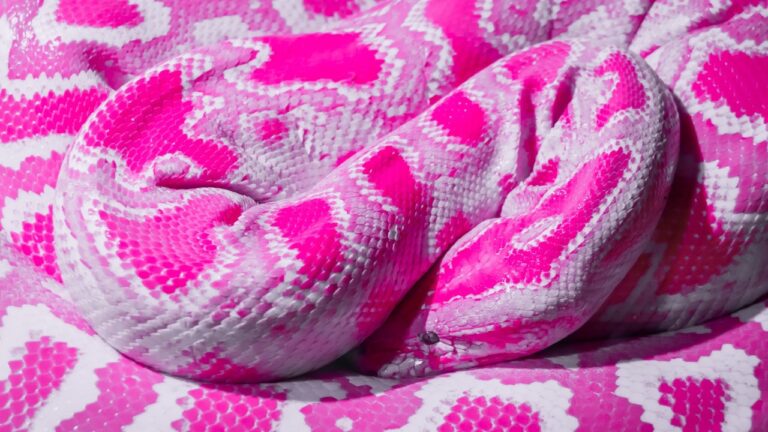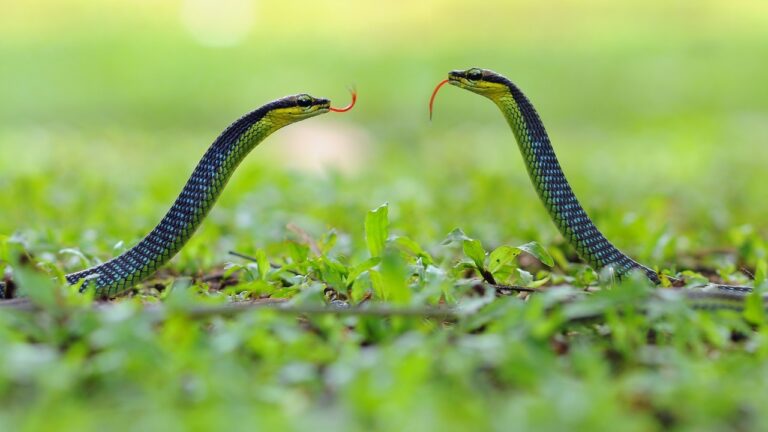Snake Feeding Chart: Optimize Your Snakes Nutrition & Diet
As any reptile enthusiast will affirm, snakes are fascinating creatures. They astonish us with their unique physiology, deft hunting skills, and varied diet. However, owning these exotic animals necessitates a deep understanding of their nutritional needs. A well-planned diet is integral to a snake’s health, growth, and longevity. Missteps in feeding can lead to a myriad of health issues, some of which can be life-threatening.
Importance of a Proper Diet for Snakes
Feeding your snake correctly is far more than simply offering it meals on a routine basis. It entails understanding the nutritional requirements specific to the species, providing a balanced diet, and adjusting feeding schedules and portion sizes as the snake grows.
A snake’s diet influences its overall health, growth rate, reproductive capability, and lifespan. Without the correct nutrients, snakes can suffer from deficiencies leading to ailments such as metabolic bone disease. Equally, overfeeding can result in obesity, which brings its own set of health complications.
To avoid such issues, one must prioritize learning about their snake’s dietary needs. Information about snake feeding habits and snake feeding mistakes can be particularly useful for this.
A well-structured snake feeding chart can be a handy tool in maintaining a balanced diet for your snake. This chart organizes the snake’s feeding routine, ensuring they receive the necessary nutrients in the right quantities and at the right intervals.
In the following sections, we will delve deeper into understanding snake nutrition, creating a snake feeding chart, and tips for healthy snake feeding. Let’s embark on this journey to optimize your snake’s nutrition and diet.
Understanding Snake Nutrition
Nutritional knowledge, especially when it comes to our serpentine friends, is crucial for their health and well-being. As we delve into the world of snake nutrition, we will explore both the basic nutritional needs of snakes and the unique dietary needs of different snake species.
Basic Nutritional Needs of Snakes
Snakes, being carnivorous creatures by nature, require a diet rich in protein. Their fundamental nutritional needs revolve around whole prey such as rodents, birds, and even other reptiles. These prey provide snakes with essential nutrients, including proteins, fats, vitamins, and minerals.
An essential aspect of snake nutrition is the ingestion of whole prey. Whole prey provides snakes with calcium, which is derived from the bones of the prey, and is necessary for the snakes’ own bone health. It also provides Vitamin D, which facilitates calcium absorption, and Vitamin A, crucial for the snake’s skin health and vision.
A well-rounded diet is integral to the snake’s overall health. It supports growth, aids in shedding, bolsters the immune system, and ensures a long, healthy life. To aid in creating the best diet for your snake, you might find our snake feeding guide helpful.
Unique Dietary Needs of Different Snake Species
While snakes generally share similar nutritional needs, there are certain unique dietary requirements based on the species. Understanding these can be the key to a thriving snake.
For instance, Corn snakes primarily feed on small rodents, but juvenile corn snakes often require smaller prey such as lizards or baby mice. Ball Pythons, on the other hand, have a preference for rats over mice, which supply a higher nutrient content. Green tree pythons, being arboreal, typically prefer a diet of birds and small mammals.
It’s also essential to note dietary variations based on a snake’s age and size. Juvenile snakes often require more frequent feeding with smaller prey, while adult snakes thrive on larger prey at less frequent intervals.
Here’s a simple table to illustrate the above:
| Snake Species | Preferred Prey |
| ————- | ————– |
| Corn Snake | Small rodents, baby mice |
| Ball Python | Rats |
| Green Tree Python | Birds, small mammals |
This understanding of species-specific dietary needs can significantly improve your snake’s health and longevity. For a more detailed look into the dietary habits of different snake species, consider exploring our snake feeding habits page.
In conclusion, understanding snake nutrition involves recognizing the common nutritional needs of snakes as well as the unique requirements of different species. By doing so, you ensure your snake thrives in health and happiness.
Creating a Snake Feeding Chart
Creating a snake feeding chart is an integral part of ensuring your reptile companion’s health and longevity. It can serve as a guide to what and when to feed your snake, allowing for adjustments in their diet as they grow and mature.
Scheduling Snake Feedings
Determining the optimal feeding schedule for your snake is crucial. Most snakes do not require daily feedings like many other pets, and their feeding schedule can range from once a week to once every few weeks, depending on the species and individual snake’s needs. A comprehensive snake feeding guide can help you understand more about specific feeding schedules.
It is worth noting that overfeeding can be as detrimental as underfeeding. Therefore, establishing a consistent feeding routine is key. This consistency also helps to reduce stress in snakes by providing predictability in their environment.
Adjusting Feeding Frequency Based on Age and Size
The frequency of feedings should be adjusted according to the snake’s age and size. Younger snakes often require more frequent feedings, usually once every five to seven days, as they are in a phase of rapid growth. As snakes mature, the frequency can be reduced.
Adult snakes typically eat once every one to two weeks, while larger species may only require a meal once a month. Always refer to a trusted snake feeding frequency source to ensure you’re providing the correct amount of food for your specific snake.
Portion Sizes for Snake Meals
Equally important to the feeding schedule is the portion size of each meal. A general rule of thumb is that the size of the food item should not exceed the widest part of the snake’s body. Overly large meals can be difficult for snakes to ingest and can lead to health problems.
In most cases, a single appropriately-sized rodent is sufficient for a meal. However, for smaller snakes or those with higher metabolisms, multiple smaller prey items may be necessary. Remember that individual snakes may have unique dietary needs, so it’s essential to observe your pet and adjust accordingly.
In the next section, we will delve into the different types of snake food and how to choose the best options for your pet. By arming yourself with knowledge and applying it to your snake feeding chart, you can ensure your snake thrives under your care.
Types of Snake Food
When it comes to feeding, snakes are as diverse as they are fascinating. Their dietary preferences largely depend on their species, age, and individual health condition. However, certain types of food are more common in a snake’s diet, particularly in captivity.
Mice and Rats
Mice and rats form the staple diet for many snake species, especially those commonly kept as pets, such as corn snakes, ball pythons, and boa constrictors. These small rodents are nutrient-rich, easily digestible, and mimic the snake’s natural prey in the wild.
Frozen rodents, available in a range of sizes, are often the most convenient and safe choice for pet snakes. They reduce the risk of injury to the snake, and are free from parasites that can harm your reptile. However, it’s important to thaw these frozen meals properly to prevent health problems.
For more information on how to feed your snake mice and rats, check out our comprehensive snake feeding guide.
Other Reptiles and Birds
Some snake species, like king snakes and certain types of constrictors, have a broader palate and might prey on other reptiles or birds in the wild. In captivity, it’s possible to feed these snakes suitably sized feeder lizards or chicks.
However, it’s crucial to ensure these prey animals are bred in captivity and free from any diseases or parasites. Remember, variety in diet should be introduced carefully to prevent digestive issues or a refusal to eat.
Our snake feeding habits article provides more insights into the unique feeding behavior of different snake species.
Insects and Worms
Insects and worms can also form part of a snake’s diet, particularly for smaller species like garter snakes and ringneck snakes. These animals feed on soft-bodied invertebrates such as earthworms, slugs, and various insect larvae.
In captivity, you can provide mealworms, waxworms, and other commercially available feeder insects. However, these should be supplemented with other food types to ensure a balanced diet.
For a detailed look into the dietary needs of insectivorous snakes, refer to our snake feeding plans page.
Remember, understanding your snake’s natural diet is key to providing proper nutrition and maintaining its overall health. Always research your specific species to determine the best feeding regime.
Tips for Healthy Snake Feeding
Introducing New Foods
Introducing new foods to your snake’s diet can be a challenging task. It’s important to remember that snakes are not like other pets. Their nutritional needs are specific, and their willingness to try new foods might vary. However, diversifying their diet can be beneficial in providing them with a comprehensive nutritional profile.
When introducing a new food, do so gradually. Start by offering small amounts of the new food alongside their usual meals. This allows the snake to get used to the smell and presence of a different food type. If your snake takes to the new food, gradually increase the portion size while decreasing the usual meal.
Remember, patience is key when introducing new foods to your snake. It might take several attempts before they accept the new addition to their diet. For more detailed advice on this, refer to our snake feeding guide.
Handling Refusal to Eat
A snake refusing to eat can be concerning for any owner. However, it’s essential to understand that snakes, unlike other pets, do not need to eat every day. A refusal to eat can be due to several reasons, such as stress, shedding, illness, or simply not being hungry.
If your snake is consistently refusing food, it’s important to troubleshoot the problem. Check their environment – is it too hot or too cold? Is your snake showing signs of illness, such as lethargy or changes in skin color? If the problem persists, consulting a vet is advised.
For more solutions to this common issue, check out our snake feeding problems page.
Monitoring Weight and Health
Regular monitoring of your snake’s weight and health is essential. This helps in detecting any potential health issues early and adjusting their diet accordingly. A snake’s weight can be a good indicator of its overall health. Unexplained weight loss or gain should be a cause for concern.
Measure your snake’s weight regularly, and keep a record. A sudden change in weight could signal an underlying health issue. Also, observe your snake’s behavior and physical appearance. Lethargy, refusal to eat, changes in skin color, or difficulty shedding are all signs that something might be off.
Remember, a healthy snake is an active snake. Keeping a close eye on their weight and overall health will ensure they live a long, happy life. For more tips on snake health, refer to our snake feeding tips page.
Conclusion
The Role of Diet in Snake Health and Longevity
Just as the adage goes for humans, “you are what you eat,” the same rings true for our serpentine companions. The impact of diet on the health and longevity of snakes cannot be overstated. Your snake’s feeding regime directly affects its growth, vitality, and lifespan, making a well-planned diet of paramount importance.
A snake’s diet is not merely a matter of providing sustenance. It is about delivering the right nutrients, at the right frequencies, and in the appropriate quantities. It’s about understanding the unique dietary needs of your snake species and adjusting the feeding frequency based on age and size. As we’ve explored in our snake feeding guide, a comprehensive feeding chart is an essential tool in achieving this balance.
Moreover, the type of food plays a significant role in your snake’s health. Feeding your snake a diet that closely mimics what they would eat in the wild is key. This might range from mice and rats to other reptiles, birds, insects, and worms, depending on the species. An appropriately varied diet can help prevent nutritional deficiencies and promote optimal health.
Equally important is the ability to handle feeding issues such as refusal to eat, which is a common problem among snake owners. This refusal can often be attributed to stress, illness, or inappropriate husbandry practices. By monitoring your snake’s weight and health regularly, early signs of potential issues can be detected and addressed.
In conclusion, a snake’s diet and feeding regimen are crucial elements that contribute to its overall well-being and longevity. The importance of a well-balanced, species-appropriate diet, coupled with a well-maintained feeding schedule, cannot be overstated. By following the tips and advice found in our snake feeding tips section, you can ensure your snake leads a healthy, happy, and long life.
Remember, an appropriately fed snake is a happy snake, and a happy snake makes for a gratified snake owner. Your effort in understanding and implementing a proper snake feeding routine will pay back in the form of your snake’s improved health and increased lifespan.
F.A.Q.
What should I do if my snake refuses to eat?
A snake refusing to eat can be a sign of several issues, ranging from stress to illness. It’s essential to first ensure that the snake’s habitat is optimum, and its needs are well taken care of. If the refusal persists, consider introducing new foods or changing the feeding schedule. A visit to the vet may be necessary if these steps prove ineffective. For a comprehensive understanding of feeding behaviors, check out our snake feeding guide and snake feeding habits.
Can I feed my snake other animals besides mice and rats?
Yes, snakes can eat a variety of animals beyond mice and rats. Their diet can include other reptiles, birds, insects, and worms. However, the specific dietary needs vary greatly among different snake species. Thus, it is critical to research your snake’s species-specific nutritional requirements before introducing new food types. Visit our snake feeding plans for an in-depth look into the diverse diets of different snake species.
How often should I update my snake feeding chart?
The frequency of updating your snake feeding chart largely depends on the snake’s age, size, and health status. Young, growing snakes may require more frequent feedings and subsequently, more regular chart updates. On the other hand, adult snakes with stable dietary routines may not necessitate frequent modifications. However, it’s advised to review and update the chart whenever there are significant changes in the snake’s behavior, weight, or overall health. For more information on scheduling feedings, visit our page on snake feeding schedules.


